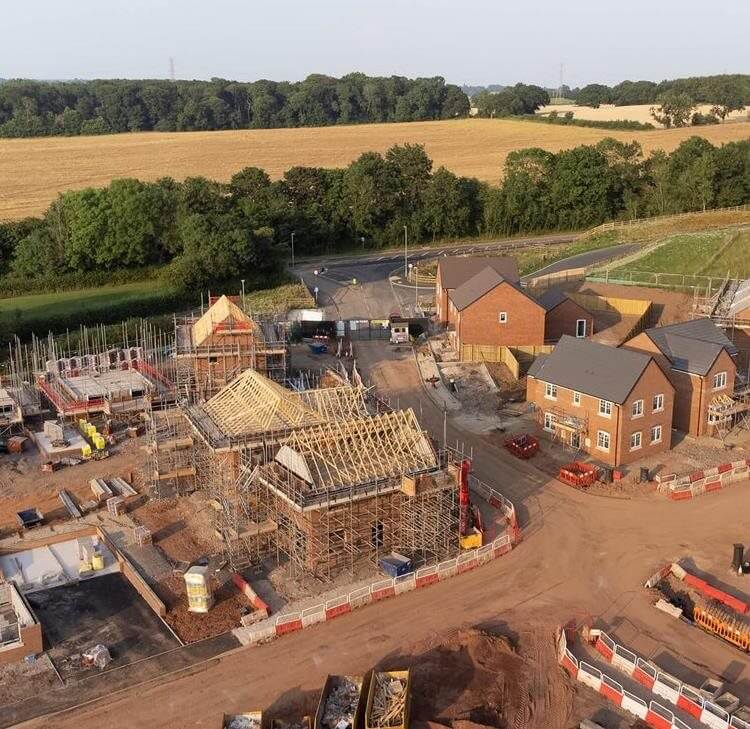There is a considerable amount of legislative and policy change taking place in town and country planning currently.
This article looks at some of the key changes which are likely to impact regeneration projects.
Big promises
These are two of the headlines concerning recent government planning announcements: 'Planning reforms to slash a year off infrastructure delivery' and 'Planning revolution to fuel growth and make Britain energy secure'. Whether the changes being implemented and under consideration will achieve these lofty aspirations remains to be seen.
However, those active in regeneration work need to keep their fingers on the pulse of these changes because amongst a plethora of proposals there are some nuggets!
This article will consider the following aspects:
- The grey belt.
- Planning application 'streamlining'.
- The brownfield passport.
- Power to eliminate hope value.
- Reforms to compulsory purchase orders (CPOs).
- The Greenfields High Court case concerning publicising draft s 106 agreements.
1. The grey belt
Grey belt refers to land within the green belt that is either previously developed or contributes weakly to the green belt's core purposes. It has been introduced through changes to the National Planning Policy Framework (NPPF).
Following the introduction of grey belt, analysis by Marrons planning consultancy from March 2025 shows that 1 in 3 (36%) housing appeals on grey belt land have been approved.
This suggests a trend toward more favourable outcomes. Despite this trend, the NPPF emphasises a case-by-case approach, meaning each application still undergoes a thorough assessment based on its specific circumstances.
2. Planning application 'streamlining': National scheme of delegation
The Planning and Infrastructure Bill introduces a new national scheme of delegation to streamline planning applications, with clear guidelines on which cases should be determined by officers and which should go to planning committees. It is intended that greater numbers of planning applications will be determined under delegated powers by planning officers to seek to ensure consistency with planning policy.
In addition, there is to be mandatory training for planning committee members and local authorities will be given the ability to set their own planning fees.
3. 'Planning Reform Working Paper: Brownfield Passport'
This working paper identifies options for a form of brownfield passport, which would be more specific about the development that should be regarded as acceptable on brownfield land, with the default answer to suitable proposals being a straightforward 'yes'.
The proposals relate to the principle, the scale, and the form of development, and to the potential wider use of Local Development Orders to grant area-wide permissions – all in a way that retains appropriate local oversight. The passports would provide upfront, site-specific information on the development potential of brownfield sites, including details on land contamination, infrastructure capacity, and other relevant constraints and opportunities.
Certainty and transparency: By providing clear and accessible information, the brownfield passport aims to reduce uncertainty and risk for developers. This transparency is intended to encourage investment by making it easier for developers to assess the viability and costs of potential projects at an early stage.
Faster development timelines: With the critical information provided by the brownfield passport, developers ought to be able to navigate the planning and approval processes more quickly. This efficiency is expected to shorten development timelines, making brownfield regeneration more appealing.
Encouragement of brownfield regeneration: The proposal is specifically designed to promote the regeneration of brownfield sites, aligning with broader government objectives to make efficient use of previously developed land, reduce greenfield development, and revitalise urban areas.
It is anticipated that the government will launch a call for evidence to gather views on options for the brownfield passport, followed by discussions with stakeholders. Finally, they will consult on specific proposals and implement new policies.
For anyone who has wrestled with the difficulties caused by implemented overlapping planning permissions, the passport has the potential to be valuable in the development world post the decision of the Supreme Court in Hillside Parks Ltd v Snowdonia National Park Authority [2022] UKSC 30.
4. Power to eliminate hope value
Section 190 of the Levelling-up and Regeneration Act 2023 allows acquiring authorities to propose the removal of the value associated with the potential for future development (hope value) from compensation calculations when acquiring land for purposes like affordable housing, healthcare, and education. Acquiring authorities are empowered to seek a direction from the Secretary of State to exclude hope value from compensation. Authorities need to provide a statement outlining the public benefits the project will achieve within 10 years.
This power should assist in site assembly negotiations, as well as compensation disputes concerning land included in those CPOs where the direction is secured.
5. Reforms to compulsory purchase orders (CPOs)
The Planning and Infrastructure Bill makes various changes to the CPO regime, including allowing statutory notices to be delivered electronically, simplifying newspaper notices, and increasing delegation of decisions. It also enables quicker vesting of land and properties and reforms the loss payments regime.
6. The Greenfields High Court case concerning publicising draft s. 106 agreements
Finally, a word of caution arising from the recent High Court decision in R (Greenfields IOW) Ltd v Isle of Wight Council and Westridge Village Ltd [2025] April 2025.
The effect of this decision is that councils must ensure s.106 agreements are published before issuing/concluding the grant of planning permission. If negotiated before the committee, they should be published immediately, and any comments should be considered.
In our view the most practical way of dealing with this is at the point when the pdf engrossment is circulated for final approval by all parties (before a hard copy is prepared), this should also be sent to the council to upload onto their planning portal.
Further, local planning authorities would be wise to ensure that as many details as possible of s.106 requirements are included in Committee reports, especially where financial contributions are involved, given that these are available for the public to comment on prior to any resolution to grant planning permission. As long as the final s.106 doesn't depart from those requirements in any significant way, an LPA would be able to demonstrate that the public has had an opportunity to comment on the requirements of the s.106. The LPA in the Greenfields judgment failed to provide an adequate level of detail, but had they done so, the judgment could have been different as the harm caused might not have occurred.
Equally if there is a viability negotiation after the application is reported to committee resulting in a material change in the planning obligations to be delivered, then prior to completion of the s 106 obligation, the precise nature of the planning obligations must be publicised by the council.
Conclusion
As ever the devil is in the detail of these changes and proposed legislative/policy revisions. Astute regeneration professionals will keep their eye on these proposals and be alive to the implications highlighted in this article.
If you would like to discuss any specific issue in more detail – do not hesitate to contact us.
















